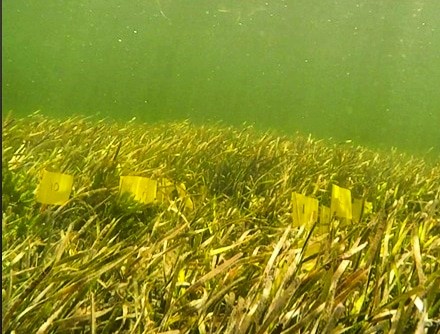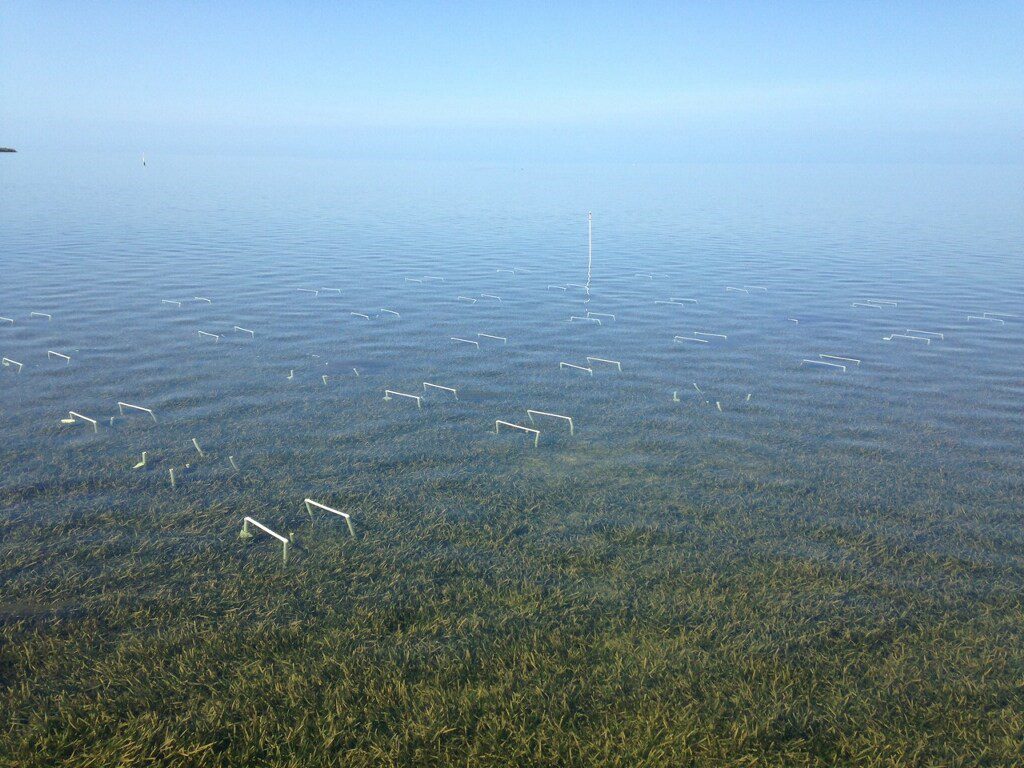**Note: this is a guest post authored by NCBS Post Doctoral Researcher Ashley Mcdonald
Warmer waters, new seagrass grazers

Have you ever wondered what could happen if warmer seas lead to the arrival of tropical fishes and invertebrates into the seagrass meadows of the Big Bend? Tropical, seagrass grazing animals have begun to expand with warming waters. But, will these new arrivals have an effect on the turtlegrass meadows around Homosassa or Cedar Key? Expanses of submerged meadows have long provided habitat and food for the scallops, manatees, and turtles that characterize the Big Bend region, the second largest continuous seagrass habitat in the continental U.S. Turtlegrass is also an important habitat and food source elsewhere throughout its range, from the northern Gulf of Mexico down throughout the tropical Caribbean. Tropical turtlegrass communities differ from temperate and sub-tropical ones because, in addition to turtles and manatees, tropical communities are also home to parrotfishes and sea urchins that heavily graze turtlegrass. In fact, overgrazing by these animals can even lead to seagrass declines. That is why research efforts have begun to examine how herbivory, or seagrass grazing, changes across a latitudinal gradient from the tropical Caribbean to subtropical northern Florida waters. By doing so, we may better understand how the expansion of seagrass grazers to this region may impact our valuable turtlegrass habitats.
Tropicalization, so what?

Investigations into what is referred to as the “tropicalization” of the northern Gulf are currently being carried out by the Thalassia Experimental Network (TEN), a multinational cooperative research group that includes researchers with the University of Florida’s Nature Coast Biological Station (NCBS) and the Smithsonian Institute’s Marine Station at Fort Pierce, under the leadership of Dr. Justin Campbell. Here at the NCBS, Dr. Charles Martin and Dr. Savanna Barry together with Dr. Laura Reynolds from the Department of Soil and Water Sciences and Dr. Tom Frazer in the School of Natural Resources and Environment are leading the investigation for UF, with NCBS postdoctoral researcher Ashley McDonald acting as Site Coordinator for the Smithsonian Institute. Field work has begun in the turtlegrass meadows near Homosassa Bay, setting up herbivore exclusion cages to compare with portions of the meadow that allow animals to freely graze. This experiment will examine turtlegrass production values between herbivore-free and herbivore-allowed meadow sections from regions of lower seagrass herbivory (e.g. the Big Bend and Florida Panhandle) to areas of greater seagrass herbivory (e.g. Mexico and Belize). The impacts of this ground-breaking research study will be far reaching in that the collaborative effort involves 11 institutions across 7 countries and will provide a unique insight into large-scale comparisons of herbivory effects on turtlegrass growth.
 1
1
